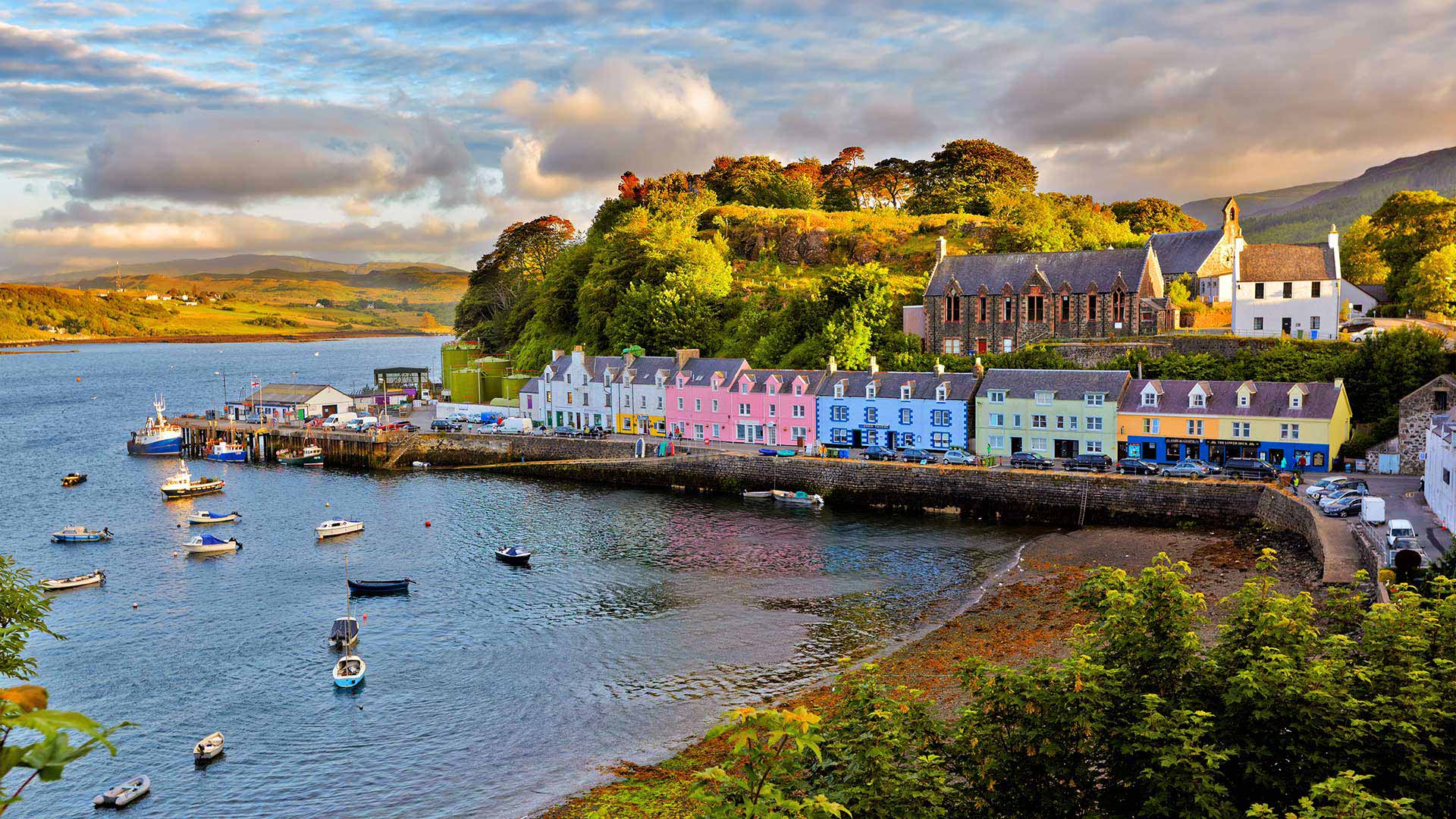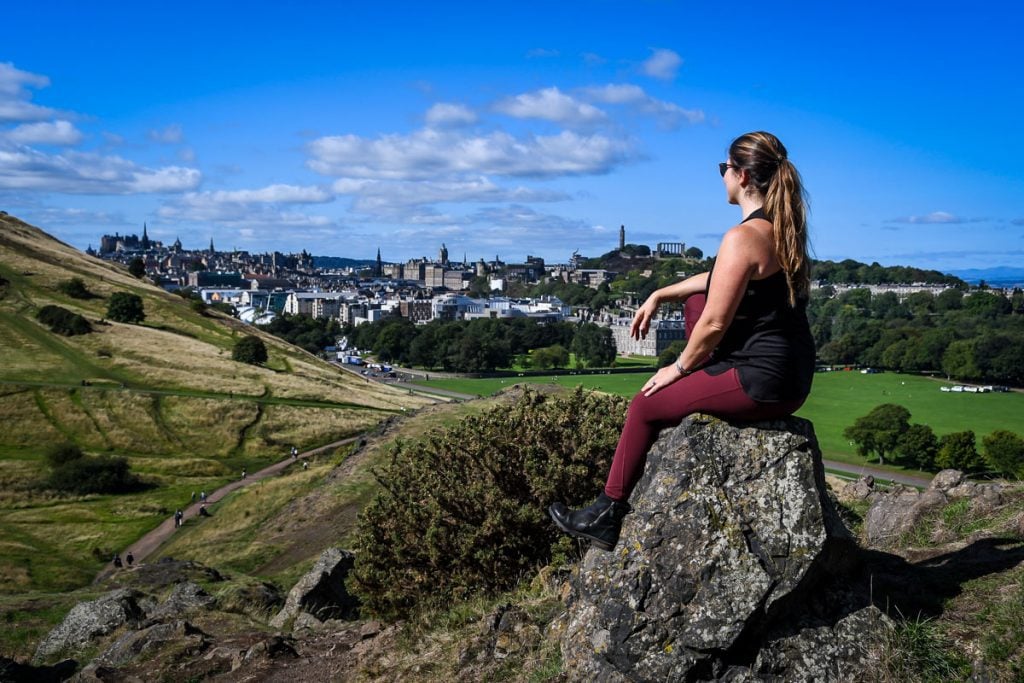Introduction
Scotland is a country of dramatic landscapes, rich history, and unforgettable experiences. From the misty Highlands and sparkling lochs to bustling cities like Edinburgh and Glasgow, every season paints a different picture of this stunning destination. But when is the best time of year to visit Scotland? The answer depends on what you want to see, do, and experience.

Spring (March to May): Blossoms and Mild Weather
Spring is one of the most delightful seasons to explore Scotland. As temperatures begin to warm (averaging 7–13°C), the countryside bursts into life with blooming daffodils, cherry blossoms, and lambs grazing in green pastures. Tourist crowds are smaller, making it ideal for visiting famous attractions like Edinburgh Castle or Stirling Castle without long lines. Outdoor enthusiasts will enjoy hiking trails in the Highlands, where snow is still visible on mountaintops but paths are more accessible.
Summer (June to August): Long Days and Vibrant Festivals
For many travelers, summer is the best time of year to visit Scotland, thanks to its mild weather and lively atmosphere. Temperatures range from 15–20°C, and the days are incredibly long, with up to 17 hours of daylight in June. This is perfect for exploring the Isle of Skye, taking scenic drives on the North Coast 500, or cruising Loch Ness. Summer also brings world-class events like the Edinburgh Festival Fringe and the Royal Edinburgh Military Tattoo. However, be prepared for larger crowds and higher prices, and don’t forget insect repellent—the midges (tiny biting insects) can be a nuisance in rural areas.
Autumn (September to November): Golden Landscapes and Fewer Crowds
Autumn offers a magical experience in Scotland. The landscapes transform into shades of gold, red, and orange, especially in regions like Perthshire, known as “Big Tree Country.” Temperatures cool to around 8–14°C, but the weather is still pleasant for outdoor adventures. This season is perfect for whisky lovers, as many distilleries hold special tours and tastings. Wildlife enthusiasts can also witness the dramatic red deer rut in the Highlands. Plus, with fewer tourists, you can enjoy popular attractions in peace and often find better deals on accommodations.
Winter (December to February): Snowy Adventures and Festive Spirit
If you love winter scenery, Scotland won’t disappoint. Snow blankets the Highlands, making it a great time for skiing or snowboarding in resorts like Glencoe and Cairngorms. Cities such as Edinburgh come alive with festive cheer, featuring Christmas markets and Hogmanay celebrations, one of the world’s most famous New Year parties. Temperatures hover around 0–5°C, and while daylight is limited, the cozy pubs and roaring fireplaces add to the charm. Just be prepared for unpredictable weather and occasional travel disruptions.

When Should You Go?
- For the best weather and festivals: Summer (June–August)
- For fewer crowds and beautiful scenery: Spring (March–May) or Autumn (September–November)
- For skiing and holiday celebrations: Winter (December–February)
Exploring Scotland by Season: Unique Experiences Await
Each season in Scotland offers something distinct. Spring is ideal for wildlife spotting, as puffins return to coastal cliffs and seals bask on the shores. Summer invites you to enjoy boat trips to remote islands, while autumn is perfect for photographers capturing misty mornings and golden forests. In winter, the snow-capped mountains provide dramatic backdrops that look straight out of a postcard.
Cultural Highlights Throughout the Year
Culture enthusiasts can discover fascinating traditions throughout the year. Spring often hosts local Highland Games, offering a taste of Scottish heritage. Summer’s festivals showcase everything from theatre to music, while autumn brings quieter cultural events, allowing travelers to immerse themselves in local traditions. Winter stands out for its Hogmanay celebrations, where torchlight processions and fireworks light up the sky.
Food and Drink by Season
Scotland’s culinary scene also changes with the seasons. Spring brings fresh seafood, such as langoustines and scallops, while summer is ideal for savoring strawberries and raspberries from local farms. Autumn is synonymous with hearty game dishes and whisky-tasting tours, and winter invites you to indulge in comforting meals such as haggis, neeps, and tatties, paired with a dram of smoky whisky.
Outdoor Adventures Tailored to the Weather
For outdoor enthusiasts, each season provides unique opportunities. Spring and autumn are perfect for hiking as temperatures are moderate and trails are quieter. Summer offers ideal conditions for kayaking, cycling, and camping under the almost-endless daylight. Winter, meanwhile, transforms the Highlands into a playground for snow sports and ice climbing, attracting thrill-seekers from around the world.
Best Time for Budget Travelers
If you’re traveling on a budget, late autumn and early spring may be the best time of year to visit Scotland. Accommodation and flight prices are generally lower, and you can still enjoy much of what the country has to offer. Plus, attractions are less crowded, giving you a more authentic experience.
Scotland’s Ever-Changing Weather
No matter when you visit, Scotland’s weather is famously unpredictable. It’s common to experience sunshine, rain, and wind all in one day. Packing layers, a waterproof jacket, and sturdy shoes is essential regardless of the season. This variability is part of the charm and ensures that no two trips are ever the same.
Wildlife Watching Opportunities
For animal lovers, timing your trip can enhance your experience. Visit in spring to see baby lambs and nesting birds, or head north in summer to spot dolphins in the Moray Firth. Autumn is prime time for deer spotting, and winter gives you the chance to witness migratory birds along the coastlines.

Choosing Your Ideal Season
Ultimately, the best time of year to visit Scotland depends on what you value most—whether it’s outdoor adventure, cultural immersion, or simply soaking in the landscapes. Each season reveals a different side of Scotland, making it a destination worth returning to more than once.
City Escapes by Season
Scotland’s cities offer diverse experiences depending on the time of year. Edinburgh in summer is alive with performers, markets, and open-air events, while Glasgow’s vibrant music scene thrives year-round. In winter, cities become magical with Christmas lights and festive markets, creating a cozy and cheerful atmosphere perfect for urban explorers.
Island Adventures
The Scottish islands each have their own charm, and timing matters. The Hebrides are most accessible in summer, offering clear skies and calmer seas for ferry travel. In spring and autumn, the islands are quieter, giving visitors a chance to enjoy rugged coastlines and wildlife in peaceful solitude.
Photography Opportunities
Photographers will find breathtaking scenery in every season. Spring provides soft light and colorful flowers, while summer’s long days allow for extended shooting hours. Autumn’s vibrant foliage adds depth to landscapes, and winter’s snowy peaks create dramatic contrasts ideal for capturing Scotland’s raw beauty.

Planning for the Best Experience
Regardless of the season you choose, planning enhances your trip. Booking accommodation early is crucial for summer festivals, while winter travelers should check weather forecasts to avoid disruptions. Flexible itineraries work best in Scotland, as the changing seasons—and unpredictable weather—are part of what makes exploring this country so rewarding.
Conclusion
The best time of year to visit Scotland truly depends on your preferences. Whether you’re drawn to the long, bright days of summer, the fiery colors of autumn, the fresh blossoms of spring, or the snowy charm of winter, Scotland offers something special year-round. Plan your trip around what excites you most, and you’ll discover why this country captures the hearts of travelers from around the globe.
Read More: Luxury Safari Tours in South Africa: African Adventure
FAQs
Late spring (May) and early autumn (September) usually offer mild temperatures and less rain.
Winter, from November to February, gives the best chance for clear, dark skies in northern regions.
Late autumn and early spring often have lower prices for flights and accommodations.
Most major festivals, like the Edinburgh Fringe, take place in summer (June to August).
Yes, for skiing, snowy landscapes, and festive events like Christmas markets and Hogmanay.
